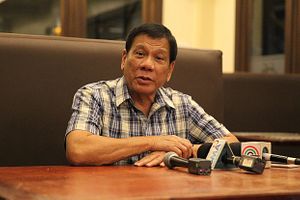This week, the Philippine National Police received another round of assets and equipment to add to its capabilities. The development spotlighted the growing role of the Southeast Asian state’s police force under President Rodrigo Duterte as well as a capability that has been the subject of controversy in the broader context of the Philippine security.
As I have observed previously in these pages, since Duterte came to power in 2016, there has been a notably increased emphasis on enhancing the law enforcement responsibilities of the Philippine National Police (PNP) and boosting its capabilities through both the modernization program as well as significant supplemental funding by the government. This is despite scrutiny from critics about the PNP’s involvement in some areas, including Duterte’s so-called war on drugs.
This week, the development of the PNP’s capabilities were in the spotlight again with a presentation ceremony of new assets. The presentation took place as scheduled at the PNP Grandstand in Camp Crame on Monday, March 2, where it was attended by a range of officials as well as personnel.
Per the Philippines News Agency, the presentation of newly procured assets totaling some 2.88 billion pesos ($57 million) was done in a ceremony that was led by PNP chief Archie Francisco Gamboa. It included, among other things, two single-engine turbine helicopters worth 225 million pesos, 37 medium troop carriers worth 3.1 million pesos each, 12 pickup trucks worth 1.6 million each, 501 combat helmets worth 32 million in total, and a range of firearms and equipment including light machine guns, basic assault rifles, pistols and magazines, explosive ordnance division robots, undershirt vests, night vision goggles, ballistic eyewear, and handheld radios.
At the ceremony, Gamboa noted that the new assets would be used for a range of purposes, including countering terrorism and cracking down on illegal drugs and criminality. He also claimed that all equipment had undergone “open competitive bidding” as well as “rigorous testing,” with “complete inspection and acceptance.”
Gamboa also highlighted new upcoming equipment to be purchased that would further boost the PNP’s capabilities. This included more helicopters as well as body cameras, where a total of 2,800 units are intended to be procured as soon as systems complete testing. As the PNP continues to build up its capabilities, how it does so and how it affects its conduct will continue to be a significant aspect in the evolution of Philippine security thinking and practice under the Duterte administration.

































